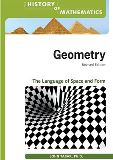Tabak J. Geometry: The Language of Space and Form. 2011.
 Tabak J. Geometry: The Language of Space and Form. - Facts on File, 2011. - 248 p.
Tabak J. Geometry: The Language of Space and Form. - Facts on File, 2011. - 248 p.
download (pdf)
Geometric questions are frequently expressed in a language of points, lines, planes, curves, and surfaces, but humanity has always been interested in questions of line and form. Cave paintings from Lascaux, France, made during the last ice age show remarkably sophisticated pictures of wild animals. Created during the Stone Age, humans were hunting mammoths when these pictures were painted. The first written languages lay 10,000 years in the future, and yet the cave paintings reveal artists who were wonderfully sensitive in their use of line and form. Does this mean that they knew geometry? And if they did, what part of the mathematical subject of geometry did they know?
Geometry, Revised Edition describes geometry in antiquity. Beginning with a brief description of some of the geometry that preceded the geometry of the Greeks, it takes up the story of geometry during the European Renaissance as well as the significant mathematical progress in other areas of the world. It also discusses the analytic geometry of René Descartes and Pierre Fermat, the alternative coordinate systems invented by Isaac Newton, and the solid geometry of Leonhard Euler. Also included is an overview of the geometry of one of the most successful mathematicians of the 19th century, Bernhard Riemann, who created both higher dimensional geometry and geometry that is intrinsic to surfaces. The theory of relativity is also examined in great detail in this full-color resource.

